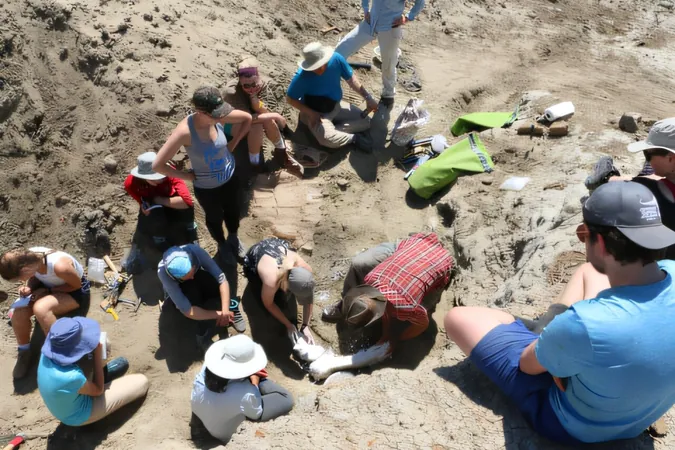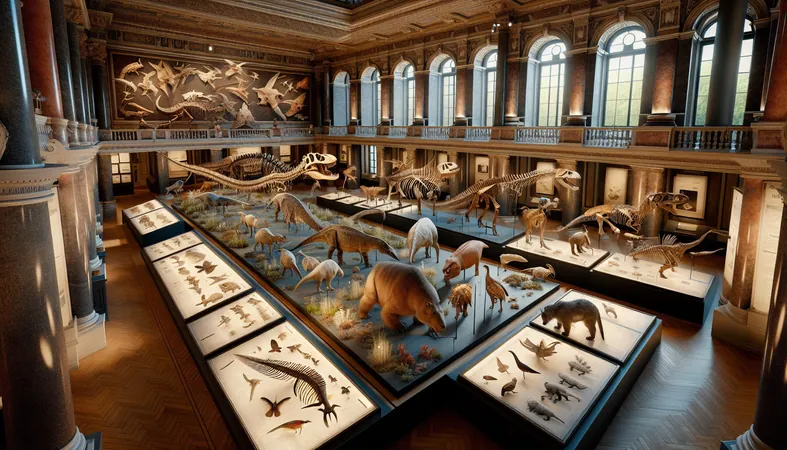
Groundbreaking Discovery: Saskatchewan's First Centrosaurus and Citipes elegans Fossils Unearthed!
2024-11-19
Author: Charlotte
Groundbreaking Discovery: Saskatchewan's First Centrosaurus and Citipes elegans Fossils Unearthed!
In an exciting breakthrough for paleontology, a team of researchers from McGill University has made a landmark discovery in Saskatchewan, locating the province's first confirmed fossils of the Centrosaurus, a remarkable horned dinosaur closely related to the well-known Triceratops. This groundbreaking find was made in the picturesque Saskatchewan Landing Provincial Park, nestled along the banks of the South Saskatchewan River.
The team's expedition not only yielded these fascinating dinosaur fossils but also a rare collection of marine fossils. This discovery provides invaluable insights into the dinosaur fauna that thrived on the fringes of an ancient sea, during a period when rising sea levels dramatically reshaped the landscape long before the arrival of humans.
Hans Larsson, biology professor and lead of the research team, highlighted the significant implications of the findings, which were published in the highly regarded Canadian Journal of Earth Sciences. "We document the largest collection of fossil specimens assigned to Centrosaurus in Saskatchewan," noted Alexandre Demers-Potvin, a key member of the research team and freshly minted Ph.D. graduate. His thesis details the pioneering documentation of this provincial specimen, further solidifying our understanding of the species’ habitat.
The excavation site, now referred to as the Lake Diefenbaker Bonebed, showcases an astonishing ecosystem unlike any previously known in Canada. Around 75 million years ago, during the Late Cretaceous period, North America was bifurcated by an enormous inland sea. While sites like Dinosaur Provincial Park in Alberta have shed light on these inland ecosystems, the new site offers a unique glimpse into a coastal habitat—a dynamic environment where large terrestrial dinosaurs like Centrosaurus coexisted with marine life, including sharks, in a rich tapestry of estuaries and barrier islands.
Remarkably, the team has not only confirmed the presence of Centrosaurus but has also discovered Citipes elegans—the first known fossils of this small, parrot-beaked dinosaur in Saskatchewan. Previously identified only in Alberta, this discovery signals a broader diversity of small dinosaur species previously undocumented in the region.
"This entire ecosystem provides a critical perspective on how ancient animals and plants adapted to substantial environmental changes, free from human intervention and on an extended timeline," commented Larsson, emphasizing the ecological importance of the fossil findings.
Most of the fossils studied were painstakingly excavated by McGill's diligent students, who participated in Larsson's vertebrate paleontology field course. The fossils, now safely curated at McGill's Redpath Museum, signify a decade-long effort in collaboration with the Royal Saskatchewan Museum in Regina.
This remarkable discovery not only enriches our understanding of Saskatchewan's ancient landscapes but also ignites curiosity about the prehistoric era and the creatures that once roamed them—no doubt setting the stage for further explorations in this intriguing field of study.









 Brasil (PT)
Brasil (PT)
 Canada (EN)
Canada (EN)
 Chile (ES)
Chile (ES)
 España (ES)
España (ES)
 France (FR)
France (FR)
 Hong Kong (EN)
Hong Kong (EN)
 Italia (IT)
Italia (IT)
 日本 (JA)
日本 (JA)
 Magyarország (HU)
Magyarország (HU)
 Norge (NO)
Norge (NO)
 Polska (PL)
Polska (PL)
 Schweiz (DE)
Schweiz (DE)
 Singapore (EN)
Singapore (EN)
 Sverige (SV)
Sverige (SV)
 Suomi (FI)
Suomi (FI)
 Türkiye (TR)
Türkiye (TR)